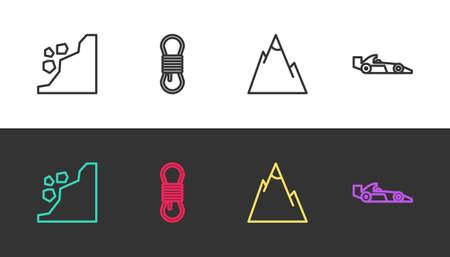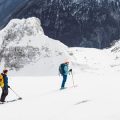1. Understanding American Wilderness Maps
Exploring the vast American wilderness requires more than just a sense of adventure—you’ll need solid map skills to navigate safely and confidently. Whether you’re hiking in a National Park or planning a backcountry backpacking trip, understanding how to read and interpret US maps is essential. Let’s dive into the unique features of American topographic and trail maps, learn about public land boundaries, and get familiar with symbols used by outdoor organizations and federal agencies.
Topographic Maps: The Basics
Topographic maps are a staple for any US wilderness explorer. These maps show the lay of the land using contour lines to represent elevation changes. The closer the lines, the steeper the terrain. USGS (United States Geological Survey) is the most common source for these maps.
| Map Feature | Symbol/Representation | Description |
|---|---|---|
| Contour Lines | Brown Curved Lines | Show elevation; closer lines mean steeper slopes |
| Water Features | Blue Lines/Shading | Represent rivers, lakes, creeks, marshes |
| Vegetation | Green Shading | Indicates forests or heavy plant cover |
| Man-made Structures | Black Symbols/Lines | Buildings, roads, trails, fences, campgrounds |
| Boundaries | Purple/Red Dotted Lines | Parks, national forest borders, private land edges |
Trail Maps: What Makes Them Different?
Trail maps focus on routes and landmarks relevant to hikers and backpackers. They highlight established trails, trailheads, campsites, water sources, and points of interest. Organizations like the National Park Service (NPS), US Forest Service (USFS), and Appalachian Trail Conservancy often provide detailed trail maps tailored to specific regions.
Key Elements Found on US Trail Maps:
- Trail Difficulty Ratings: Often marked with color codes or symbols (green circles for easy, blue squares for moderate, black diamonds for difficult)
- Mile Markers: Distances between trail junctions or landmarks help with wayfinding and planning breaks.
- Campsites & Shelters: Indicated by tent or shelter icons.
- Water Sources: Streams or springs shown with blue droplet symbols.
- Emergency Access Points: Marked for quick exit or rescue locations.
Public Land Boundaries: Knowing Where You Stand
The United States has a patchwork of public lands managed by different agencies—national parks, forests, wilderness areas, BLM lands (Bureau of Land Management), state parks, and more. Knowing where these boundaries lie is crucial for understanding regulations (like camping rules or permit requirements) and respecting private property.
| Agency/Land Type | Typical Map Symbol/Color |
|---|---|
| NPS (National Parks) | Green shading or boundary lines; “NP” labels |
| NFS (National Forests) | Pale green shading; “NF” labels; dashed lines for boundaries |
| Bureau of Land Management (BLM) | Tan/yellow shading; “BLM” notation; dotted boundaries |
| State Parks/Wildlife Areas | Purple or blue outlines; “SP” or state initials as labels |
Common Symbols Used by Outdoor Agencies and Organizations
| Symbol/Icon | Description/Meaning |
|---|---|
| ⚓ | Campsite/Shelter location (tent symbol) |
| 💧 | Water source (blue droplet) |
| 📍 | Trailhead/start point (pin icon) |
| ⚔ | Bicycle-allowed trails (bike symbol) |
| ❗ | Caution/danger area (exclamation mark) |
| ⛺ | Latrine/toilet (toilet icon) |
| 🚪 | No entry/restricted area (red circle slash) |
A Quick Tip:
If you’re unsure about a symbol on your map, check the legend—usually found in one corner of your map sheet. It’s your key to decoding all those colors and icons!
The Takeaway for Route Planning and Wayfinding in America’s Wild Lands:
The more you practice reading US topographic and trail maps—and get familiar with agency-specific symbols—the easier it becomes to plan safe adventures in America’s great outdoors. In upcoming sections, we’ll break down route selection strategies and real-world navigation tips tailored to American wilderness travel.
2. Route Planning Basics for Backcountry Adventures
Plotting Safe and Efficient Hiking Routes
Planning your hiking route is the foundation of a successful wilderness adventure in the United States. Whether you’re trekking through the Rocky Mountains, the Appalachian Trail, or deserts of the Southwest, route planning helps you stay safe and enjoy every step. Start by marking your trailhead and destination on a map—digital or paper. Use established trails when possible, as these are typically safer and well-maintained. For off-trail adventures, identify natural landmarks like rivers, ridges, or lakes to help guide your way. Always consider daylight hours, water sources, campsite locations, and emergency exit points.
Calculating Distances and Elevations
Understanding how far you’ll travel and how much you’ll climb is essential in American backcountry. Most topographic maps use a scale (such as 1:24,000), meaning one inch on the map equals 24,000 inches (or 2,000 feet) on the ground. Use a ruler or string to measure your planned route on the map, then convert it to real-world distance using the map’s scale.
| Measurement Tool | How to Use | Pro Tip |
|---|---|---|
| Map Scale Bar | Align with your route to estimate miles/kilometers. | Break long routes into segments for better accuracy. |
| Elevation Contours | Count contour lines crossed; multiply by contour interval. | Steeper terrain = closer lines; plan for slower travel. |
| GPS/Mapping Apps | Plot route digitally for automatic distance/elevation data. | Always carry a backup paper map in case batteries die. |
Recognizing Environmental Considerations Across American Terrains
The U.S. wilderness is incredibly diverse—from alpine peaks to dense forests and arid deserts. Each environment brings its own challenges:
| Terrain Type | Main Considerations | Route Tips |
|---|---|---|
| Mountains (Rockies/Cascades) | Avalanche risk, rapid weather changes, elevation gain. | Avoid avalanche chutes; monitor weather forecasts closely. |
| Deserts (Southwest) | Lack of water, extreme heat, limited shade. | Carry extra water; plan hikes for early morning or late afternoon. |
| Forests (Appalachians/Pacific Northwest) | Navigational challenges due to thick vegetation, ticks/poison ivy. | Use clearings or ridgelines for orientation; wear protective clothing. |
| Lakes/Rivers (Midwest/Northeast) | Muddy trails, flooding after rainstorms. | Avoid low-lying paths during wet seasons; check bridge conditions. |
Sneaky Hazards & Local Regulations
The American backcountry also includes private land boundaries and protected areas. Always check if permits are required for your chosen area (like National Parks or Wilderness Areas). Watch out for wildlife closures or fire bans—these can change your route at the last minute!

3. Wayfinding Skills with Compass and GPS
Mastering Classic Compass Navigation
In the American wilderness, being able to use a compass is more than just a cool skill—its a safety essential. A classic compass works even when your phone or GPS dies. Here’s what you need to know:
| Compass Skill | Why It Matters |
|---|---|
| Taking a Bearing | Helps you follow a straight path toward your destination, even through thick forests. |
| Orienting Your Map | Makes sure your map matches the real world so you don’t get turned around. |
| Triangulation | Lets you pinpoint your location using visible landmarks like peaks or lakes. |
Pro Tip:
Always keep your compass flat and away from metal objects—they can mess up your readings!
Integrating GPS Devices and Smartphone Apps
Modern explorers often combine old-school tools with tech. Handheld GPS units and smartphone apps (like Gaia GPS or AllTrails) are popular in the U.S. for their convenience and accuracy. Here’s how to make the most of them:
- Download Maps Offline: Cell service can be spotty. Always save maps before heading out.
- Mark Waypoints: Save key locations such as trailheads, campsites, and water sources for quick reference.
- Battery Management: Carry backup batteries or a power bank—cold weather drains batteries fast.
Comparing Navigation Tools
| Tool | Best For | Main Limitations |
|---|---|---|
| Compass & Map | No-battery navigation, emergency situations | Takes practice, no real-time location tracking |
| GPS Device | Accurate tracking, marking waypoints, longer battery life than phones | Batteries can still run out; needs regular updates |
| Smartphone App | User-friendly, interactive maps, integrates photos/notes | Batteries die quickly; risk of damage if dropped or wet |
Adapting to Off-Trail Situations in the US Wilderness
A lot of America’s wild places have unmarked trails or no trails at all. Here’s how to navigate safely off-trail:
- Pace Counting: Estimate distance by counting steps between landmarks.
- Aim for Big Landmarks: Rivers, ridgelines, and valleys are easier to find than tiny features.
- Leave No Trace: Stick to durable surfaces and avoid creating new paths that harm nature.
- Stay Oriented: Regularly check your position on both compass and GPS—don’t wait until you’re lost!
Your Go-To Wayfinding Checklist:
- Cary map, compass, and GPS/app—use all three together.
- Keeps maps dry in a ziplock or waterproof case.
- Tells someone your route before you leave home.
- Packs extra batteries or a power bank.
- Keeps practicing skills—even on local hikes!
Navigating the American wilderness means blending time-tested techniques with modern tools. Whether youre deep in the Rockies or wandering the Appalachians, mastering these wayfinding skills keeps your adventure safe and on track.
4. Reading the Landscape: Landmarks and Natural Navigation
When you’re exploring America’s vast wilderness, your ability to read the landscape is just as important as knowing how to use a map or compass. The American backcountry—from the Rockies to the Appalachians and everywhere in between—offers a variety of natural features that can help you stay oriented and safely navigate your route.
Key Natural Features for Navigation
Learning to recognize and use landmarks like mountain ranges, rivers, and forests helps you keep track of where you are, even if technology fails or trails aren’t well-marked. Here’s a quick guide to using some classic American features:
| Feature | Navigation Tip |
|---|---|
| Mountain Ranges | Mountains are visible from far away and usually run in predictable directions (for example, the Rockies run mostly north-south). Use them as reference points to orient your map and judge distance. |
| Rivers & Streams | Waterways often flow downhill and can guide you toward valleys or out of tricky terrain. Following a river downstream typically leads to roads or settlements. |
| Forests & Clearings | Forest edges or changes in tree types can signal elevation shifts, water sources, or trail intersections. Open meadows may serve as good rest spots or landmarks on your route. |
| Lakes & Ponds | Bodies of water are easy to spot on both maps and in real life. They can serve as excellent checkpoints for confirming your position. |
| Canyons & Cliffs | In places like the Southwest, canyon walls and cliffs are major obstacles. Use their positions to orient yourself and avoid getting boxed in. |
The Value of Local Knowledge
No two regions are exactly alike. Before setting out, talk with local rangers or experienced hikers about what unique features or hazards you might encounter. For example, navigating in the dense forests of the Pacific Northwest is very different from crossing open desert in Utah. Locals can point out seasonal changes, animal activity, or subtle landmarks that don’t appear on any map.
Practicing Leave No Trace While Navigating
As you use these natural features for wayfinding, always remember Leave No Trace principles. Avoid creating new cairns (rock piles) or marking trees—these actions disturb nature and can mislead future hikers. Stick to established trails whenever possible and respect all wildlife habitats along your journey.
Leave No Trace Quick Tips for Wayfinding:
- Avoid breaking branches or disturbing rocks as markers.
- Don’t carve into trees or rocks.
- If lost, retrace your steps rather than making new paths.
- Share knowledge with others but protect sensitive locations by not sharing exact details online.
Building Your Skills Takes Practice
The more time you spend observing and learning from the land itself, the better navigator you’ll become. Next time you’re out in the wilds of America, take a moment to look up from your GPS—read the ridgelines, listen to flowing water, and let the landscape guide your way.
5. Troubleshooting and Decision-Making in the Field
Staying Calm When Things Go Sideways
Even the most experienced American wilderness explorers sometimes face unexpected situations. Whether you’re trekking in the Rockies, hiking the Appalachian Trail, or exploring the deserts of Utah, things can go wrong. The key is to stay calm, assess your situation, and use your map skills to make smart decisions. Here are some practical strategies for common challenges:
What To Do If You Get Lost
| Step | Action | Real-Life Example |
|---|---|---|
| 1. Stop and Breathe | Don’t panic; take a minute to calm down. | A hiker in Yosemite lost sight of the trail but avoided wandering further by sitting down and regrouping. |
| 2. Observe Your Surroundings | Look for landmarks, trail markers, or unique features noted on your map. | A backpacker in the White Mountains recognized a distant ridgeline from their topographic map and reoriented themselves. |
| 3. Use Your Map and Compass | Pinpoint your last known location; check nearby trails or water sources for reference points. | An explorer in Colorado used a compass bearing to find a nearby creek marked on their map, leading them back to their route. |
| 4. Make a Plan | If you’re truly lost, it’s often safest to stay put and signal for help (whistle, bright clothing, etc.). If you must move, leave clear markers as you go. | A group in the Sierra Nevada built an X with sticks in an open area to signal rescue teams. |
Handling Sudden Weather Changes
Weather can change fast in the American backcountry—from sunny skies to thunderstorms or snow. Here’s how to adapt:
| Weather Shift | Immediate Actions | Example Scenario |
|---|---|---|
| Thunderstorm Approaching | Descend from high ground, avoid isolated trees, seek low shelter. | A hiker in Rocky Mountain National Park noticed dark clouds and quickly left an exposed ridge for lower ground. |
| Heavy Rain or Snow Starts | Check your map for nearby shelters, campsites, or safe terrain like dense forest or large rocks. | A group on the Pacific Crest Trail found a mapped campsite just before a snow squall hit. |
| Dramatic Temperature Drop | Add layers of clothing, eat snacks for energy, and look for natural windbreaks shown on your map. | An Appalachian Trail thru-hiker used a hollow marked on their map to escape icy winds overnight. |
Troubleshooting Other Unexpected Challenges
- Losing the Trail: If trail blazes disappear or paths fade out, look for terrain features—like streams or saddles—that match up with your topographic map. Backtrack to your last known point if needed.
- Navigating Around Obstacles: Fallen trees, flooded creeks, or landslides are common. Use your map to identify possible detours or parallel routes; don’t risk unsafe crossings.
- Running Low on Water: Identify water sources ahead of time using your map’s blue lines (creeks/lakes). Always have a backup plan if the source is dry—carry extra water where possible in arid regions like Arizona or New Mexico.
Remember: Smart Decisions Save Lives
The American wilderness rewards those who are prepared but also flexible when conditions change. By practicing map reading and wayfinding skills—and knowing how to troubleshoot—you’ll be ready for whatever nature throws your way.


